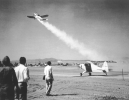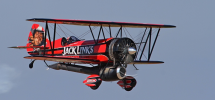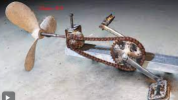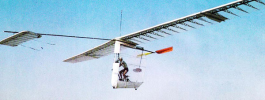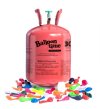Not, ummm, impossible. Back in the '80s, a guy I worked with had a ballute concept (concatenation of balloon and parachute) for satellite re-entry. The capsule or whatever would be behind the ballute, which faced into the re-entry plasma. It was actually cooled by the exhaust from a rocket engine facing forward.... the rocket exhaust was cooler than the plasma. So, conceivably, you could have a hot-air balloon inflated by a jet engine.
View attachment 126356
The man's name was Doctor Dana Andrews (same as the actor). The movie "2010" used this concept to slow a spacecraft around Jupiter, and Andrews' name is listed in the credits.
Ron Wanttaja


